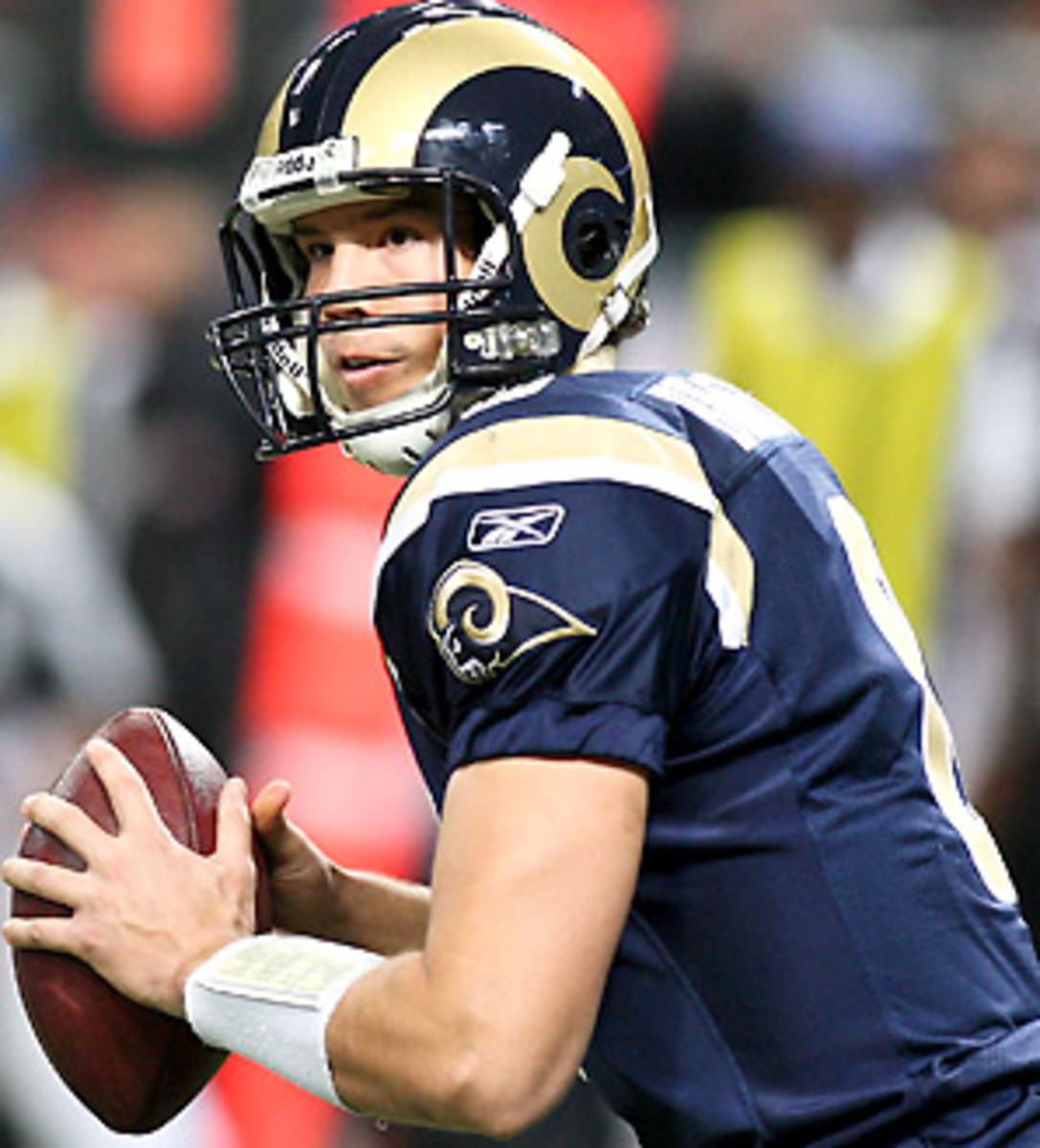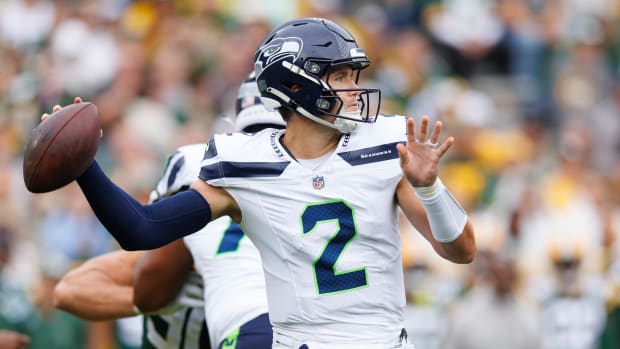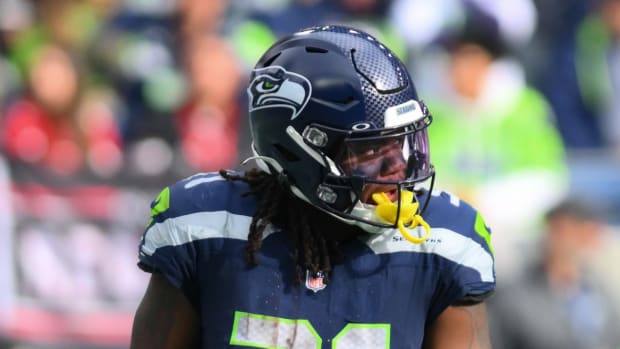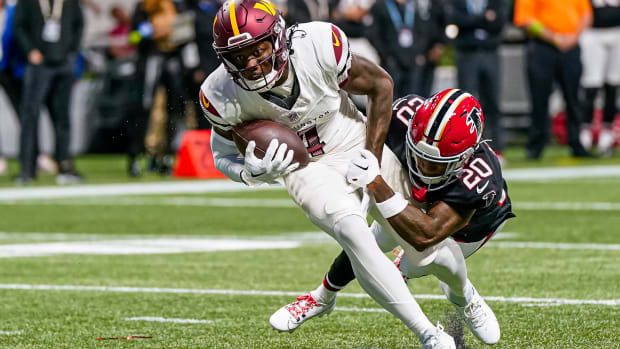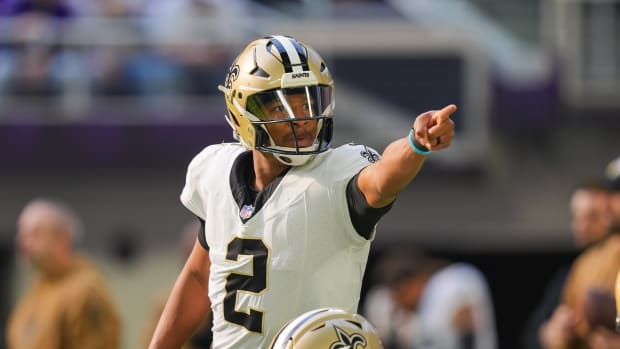For Rams, Browns, when to move on from a young QB?
Sam Bradford has experienced a significant sophomore slump this season. (ZUMAPRESS.com)
The Browns' patience with Colt McCoy may be on the verge of running out. The Rams, meanwhile, still seem very much committed to Sam Bradford as their quarterback of the future.
What's the difference between the two QBs, other than about $73 million in total contract money? This season, not much.
A baseline comparison of the stats shows that Bradford, who missed two games because of a high ankle sprain, is pretty much on an even plane with McCoy in 2011. The Browns' second-year quarterback is averaging 37.2 passes per game, 220.2 yards passing, and has thrown for 10 touchdowns and six interceptions with a QB rating of 78.2. That's nearly six points higher than Bradford (72.6), who has just four touchdowns in his seven starts.
Those are numbers that even Bradford himself said are unacceptable:
"I think my performance so far has been a little disappointing, especially from my perspective," Bradford said. "I expect a lot of myself. I expected to come in and have a great year, and obviously I have struggled at times."
The main advantage Bradford has over McCoy right now is that we've seen what he's capable of in the NFL. Bradford threw for more than 3,500 yards in his rookie season of 2010, while nearly taking the Rams to an NFC West title. McCoy, simply for comparison's sake, had 1,576 yards passing in eight starts and threw more interceptions than touchdowns last season.
But both Bradford and McCoy are forcing the question to be asked: What's the cutoff point for a young QB? In other words, how long do franchises commit to their, well, franchise quarterbacks before writing them off?
It's not a question being asked just in Cleveland or St. Louis, but in places like New York and Tampa Bay, where Mark Sanchez and Josh Freeman, respectively, have had their ups and downs.
In Bradford's case, to dip back to the financial factor mentioned earlier, he's only in year two of a $78 million deal that had $50 million guaranteed. Combine that with his standout 2010 and his leash figures to be a little (or maybe a lot) longer than that of McCoy, who's four-year deal will pay him just about $4.5 million.
That beefy Bradford contract was part of the reason that trading the ex-Oklahoma QB and drafting Andrew Luck came up when the Rams were winless -- under the NFL's new CBA, Luck will be a far cheaper option than Bradford. With the Rams picking up two victories and the Colts looking like they might not win again until they can draft Peyton Manning's son in 20 years, we can forget about that idea.
The fact that it warranted even speculation, though, emphasizes how fickle things can be for a young quarterback. If Bradford struggles down the stretch in 2011, then fails to rebound in 2012, will the Rams keep waiting?
They're hoping, obviously, that it doesn't come to that.
And to some extent, this year's issues should come as no surprise, given the departure of 2010 offensive coordinator Pat Shurmur to Cleveland and the arrival of Josh McDaniels to call plays. McDaniels' system is entirely different from Shurmur's -- meaning that Bradford had to learn a second offense, despite a shortened offseason.
St. Louis coach Steve Spagnuolo said that Bradford was about to turn a corner before injuring his ankle:
"I think is what threw things off a little bit was the injury," Rams coach Steve Spagnuolo said. "I really felt coming out of that Green Bay, even though we didn’t score a lot of points, that something was clicking, we were hitting a groove. The last play, the ankle and now we’re kind of reloading two or three weeks later."
Add in a banged-up Steven Jackson and a M*A*S*H unit at wide receiver, and some of Bradford's struggles are understandable.
































